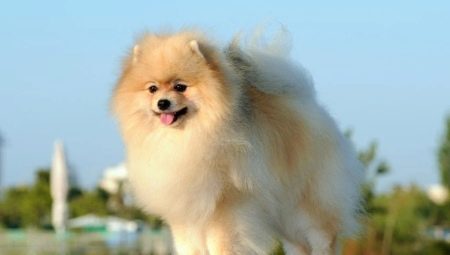Like all dwarf dog breeds, the Spitz needs constant care from the owner. The most common among representatives of this breed is Pomeranian. Cute affectionate dogs that look like a miniature teddy bear were bred in Germany. This is a convenient and compact breed for keeping in conditions of even small apartments.
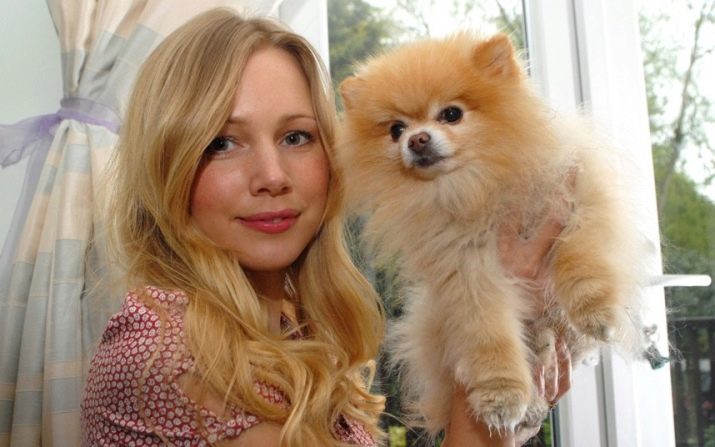
Breed features
The appearance of the Spitz, especially the muzzle, resembles a fox - a round head and not far set, medium-sized ears. The rounded nose is small, usually brown or black. Oranges do not have a long body with deep breasts and round ribs.
This thoroughbred dog is black, white, tan with black or blue. Also, a furry coat can be standard brown, cream, brown, orange, dark chocolate, black and red.
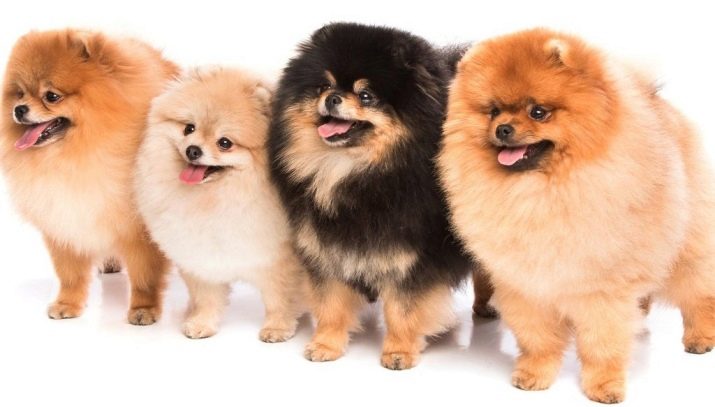
Small "cubs" have standard parameters: in height there are from 19 and no more than 30 cm, at the withers - 19-22 cm, pet weight from 1 to 4 kg. The maximum age reached by the Spitz is 15 years.
The main difference between oranges is beautiful, soft and thick fur. Thanks to the dense undercoat, he is lifted up as if he had been specially laid with a hairdryer. The maximum hair grows at the Spitz on the neck, shoulders, hind legs and tail.
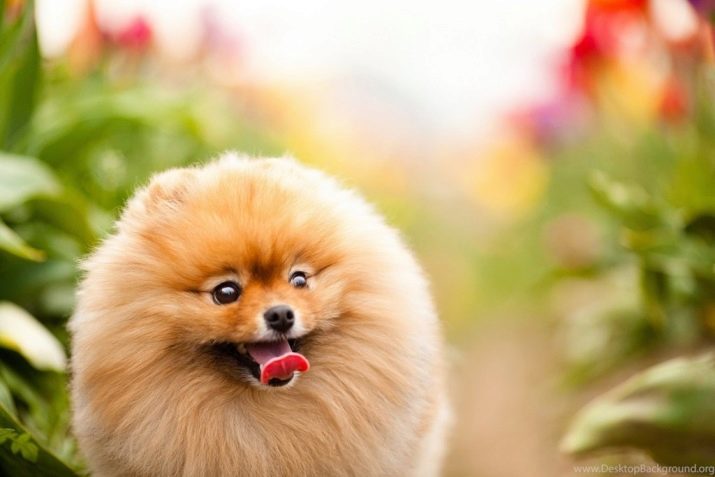
Pomeranian Spitz pretty good health. Appearance often provides breed representatives first places at the shows. A more detailed description of the breed will help to understand whether the potential owner will be able to fully take care of the pet, and will also help prepare himself and his home for the meeting and training of the puppy.
Pomeranian Spitz Ideal for urban living. The dog does not need intensive care and can become a loyal companion to a caring owner. Suitable for an experienced dog breeder and a simple lover of four-legged friends. But to acquire a puppy of a reference sample is important in a specialized nursery, contacting only a trusted breeder. First you need to ask the pedigree of the furry baby.
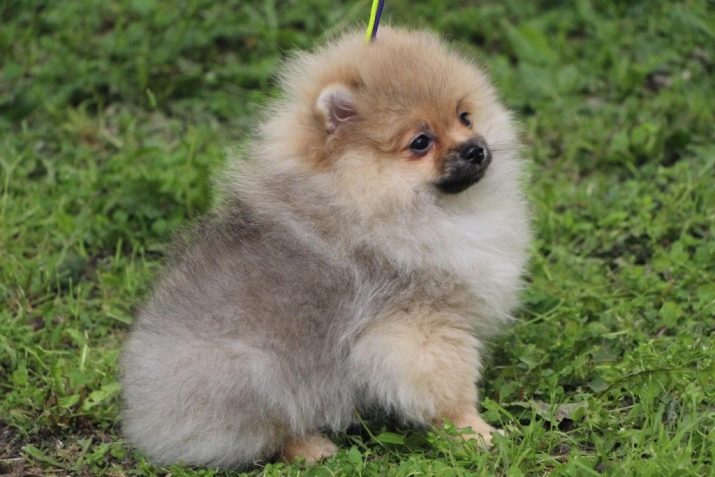
Seeing once a tiny Pomeranian, it is impossible not to fall in love with him. This is an affectionate, easy-going, loyal fluffy dog. He is so sociable that he simply cannot stand loneliness. Wherever the owner is, a small pet will strive to follow him faithfully.
The character of the Spitz is friendly, but brave. A small dog is not aware of its small size and fearlessly throws himself at large animals. Such behavior may be unsafe for him.
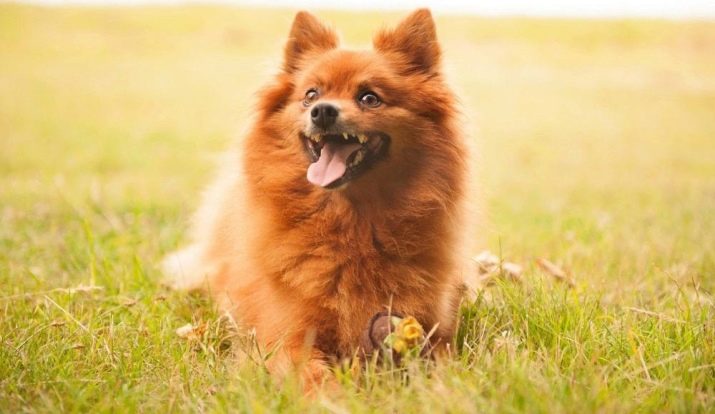
If other animals live nearby, the kids are more restrained with them, especially if they grew up nearby. The miniature companion has a playful, cheerful disposition. This is an energetic dog, obedient and extremely savvy.
Spitz has excellent hearing and a tendency to take the owner "for the main". therefore Dogs are easy to train and understand the team perfectly.
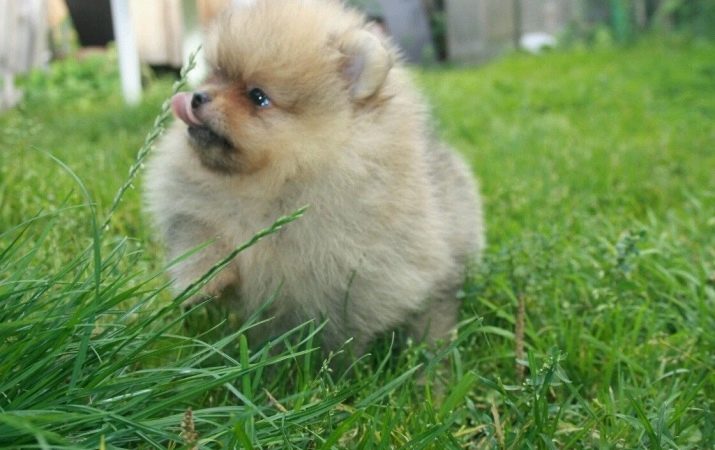
These smart dogs everywhere and everywhere strive to protect their companion. Spitz is endowed with high intelligence, loyal, with a pronounced self-esteem. They get along well with small family members and love games and communication. To these pets need a lot of attention. Spitz belong to strangers incredulous, but not aggressive.
The puppy grows up for a long time. If he exhibits abnormal behavior, do not physically educate him. This form of education will not lead to anything good. In the case of the Spitz, it is important to seek compromises.
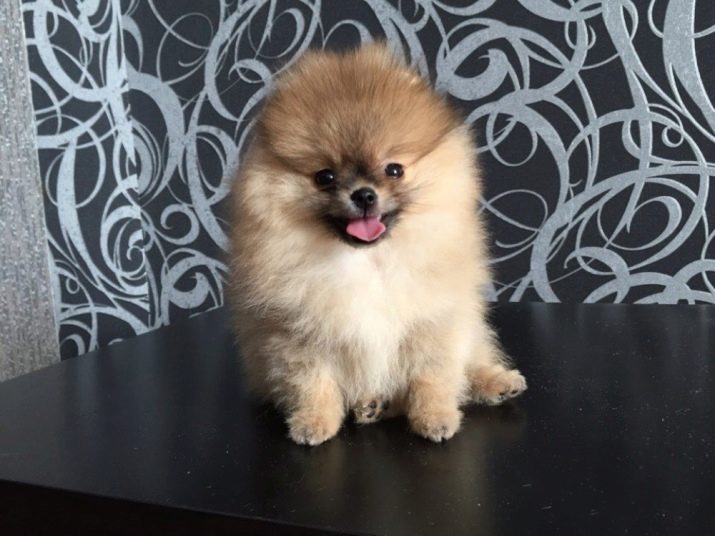
The best option is to divert the attention of the pet, or rather, switch it. And all valuable things should be removed for a while from his field of vision. If expensive shoes or a favorite trinket remained in the reach of the baby and was gnawed by him, then the responsibility for what happened lies with the owners. The periods of activity in the Spitz are replaced by the position of passive observation.
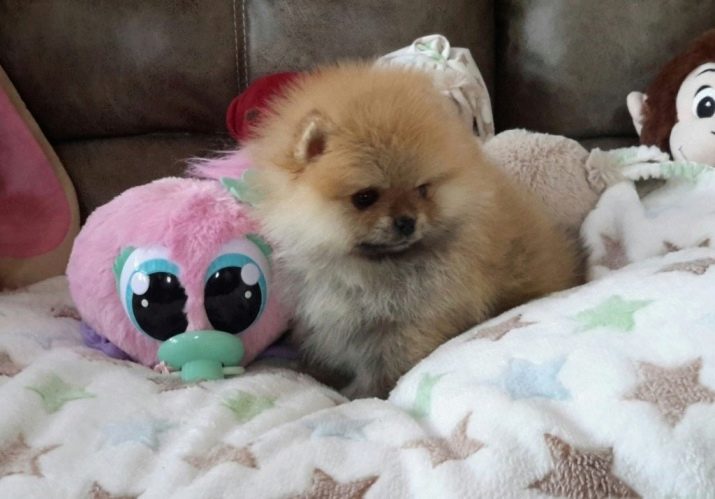
Where to settle?
The little dog is a big "adventurer" who will explore all corners of the apartment with curiosity. Therefore, it is important to eliminate all gaps in advance. It is better to move the refrigerator and heavy furniture closer to the wall.
If the house has an open balcony it is important to take care of the design safety for a small pet. An inquisitive puppy can squeeze through the fence and fall. It is also necessary to consider flooring if it is slippery for a spitz. So that the hind legs of the baby develop correctly, he should not slide them on the floor.
The mat will help to avoid trouble with the development of the baby.

All the following things should be hidden from the Spitz.
- chemical preparations;
- everything is shallow and sharp;
- garbage.
It is also advisable to remove dishwashing liquid and a bin from the dog. If the latter does not work, then the bucket must be covered with a tight lid.
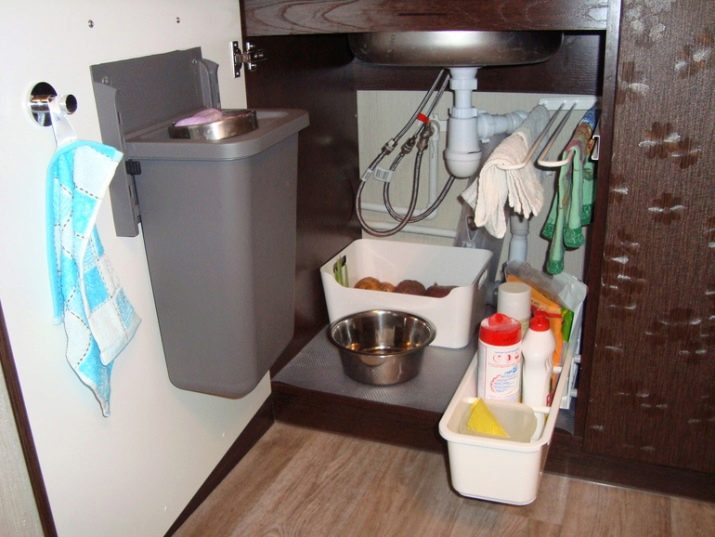
Where the Spitz lives, it should not go through. Small pets catch a cold easily. But kids have no place near batteries. The puppy will appear most comfortable in a special mobile plastic box bought at a pet store, or in a basket with soft diapers.
It is advisable to place the lounger in the bedroom so that the little pet is not alone at night. But you should not take a Spitz to bed in any case. So you can accidentally injure a dog, besides then wean it from the habit of sleeping next to the owner does not work. So that the baby gets used to his place faster, you can periodically put there different "dog" toys and tasty treats. They will cause the baby a pleasant association with the place of sleep, and thus he will become attached to it.
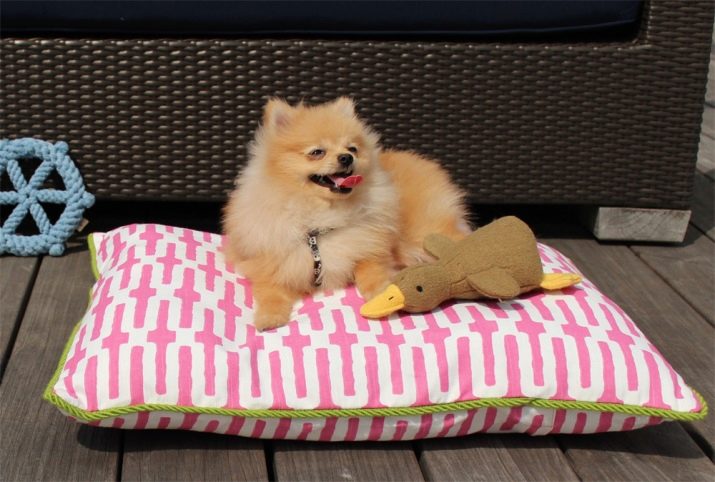
Feeding
After acquiring a Pomeranian, it is important to consider its nutrition. At first, it is better to feed the dog with the kind of food that the breeder fed him. If this is not possible, the introduction of a new feed should be gradual, not faster than 7 days after settling in a new place.
It is desirable to feed a pet professional dry food with a high content of protein of animal and vegetable origin, enriched with vitamins.
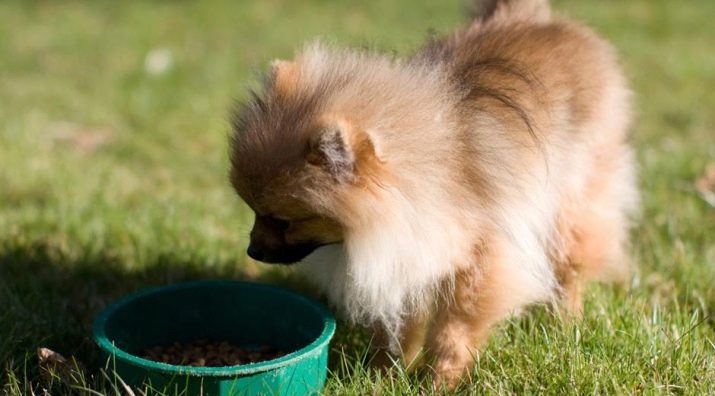
Natural food from the master's table may not be suitable for the baby. Meals are distributed according to the recommendations indicated on the packaging with food and taking into account the age of the dog.
It is sometimes shown to add fermented milk products, vegetables and local fruits in their natural fresh form to the menu, boiled meat. Proper nutrition is usually:
- high-quality water;
- lack of pork meat, sweets, sausages and smoked meats, salty, spicy food;
- restriction of dairy products, fresh white cabbage and legumes.
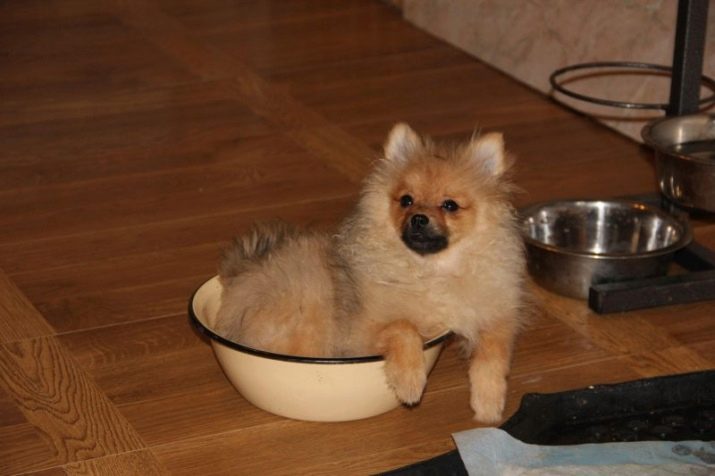
In a natural daily menu should be present:
- lean beef fillet;
- chicken (pulp);
- sea fish;
- boiled eggs;
- dairy products with a reduced percentage of fat content;
- vegetables;
- crackers or unleavened biscuits;
- cereals (without the addition of oils and unsweetened).



You can not treat the dog:
- pasta, bread and rolls, legumes;
- potatoes
- delicacies not intended for dogs;
- small bones.
You can’t follow the dog’s case, begging for something from the general table. You need to cook for it separately and daily, so that the food is always balanced and fresh.

Veterinarians do not mind the use of dry food for daily nutrition. The only rule is that “drying” must be premium. These feeds are more expensive than the economy class, but are made from extra-quality products while maintaining the balance of all valuable vitamins and minerals.
Allowed for oranges and mixed nutrition. But in this mode, you can’t mix dry food and “natural” in one go. If the pet was first fed “drying” and later it was decided to transfer to “natural”, the factory feed does not need to be changed at once. Starting to cook it yourself, switch to fresh food gradually. Mixed food is recommended first.

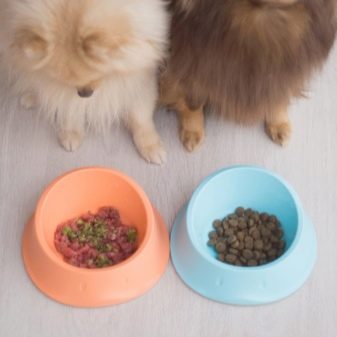
Carefully evaluate the well-being of the dog. With the appearance of liquid stool, veterinarians recommend returning to the previous diet. You can try again the transition to the “natural” later, when the dog’s stool is finally normal.
Monthly ration
From three weeks of age, minced meat is added to the mother’s milk on the baby’s menu. If the monthly Spitz is excommunicated from the female, you need to feed him 6 times a day with liquid porridge in fresh milk, homemade cottage cheese, minced meat with vegetable puree.
At the age of 2 months, the Spitz continues to eat in the same way, but exactly 5 times a day. It should be borne in mind that the food is made for the baby, so the portions should not be large.
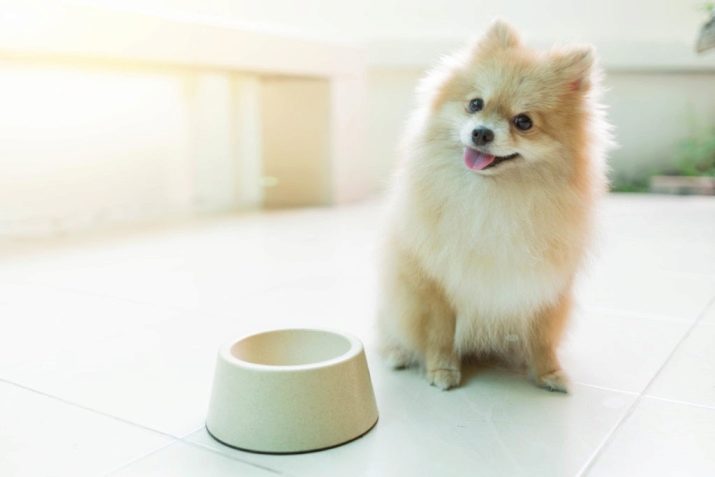
As soon as the fluffy crumbs are 3 months old, the minced meat is gradually replaced with larger pieces. They are conveniently added to porridge from rice or buckwheat. It is necessary that the dog gradually gets used to eating solid food.
In this age period, the Spitz is in decline, the need for "milk". To replace milk in the porridge, meat broths are introduced. The number of feedings is reduced to 4. On a mixed diet, pieces of dry food are pre-soaked in broth or canned food is used for the first time to preserve the baby's teeth.
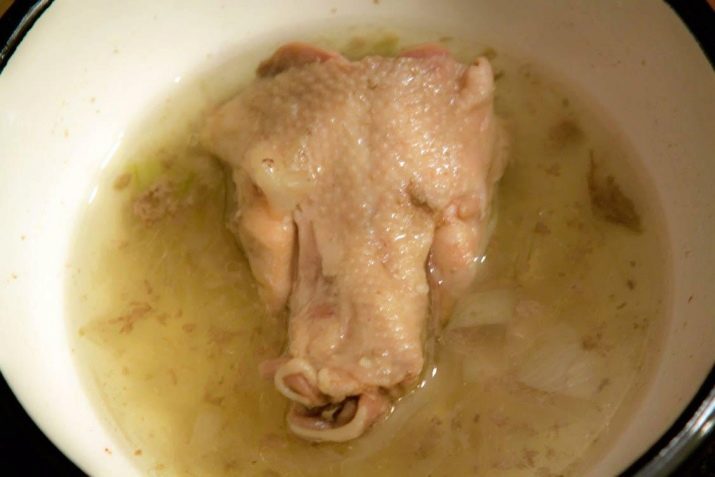
The diet of the 6-month-old Spitz is again undergoing changes. Now the dog needs to be given food three times a day. The predominant component of the menu is the meat in small pieces. As auxiliary products, rice (buckwheat) cereals, carrots, pumpkin, zucchini, broccoli, cottage cheese, yogurts and yogurt are used.
Twice a week the dog must be treated with boiled eggs, added to cottage cheese or porridge.
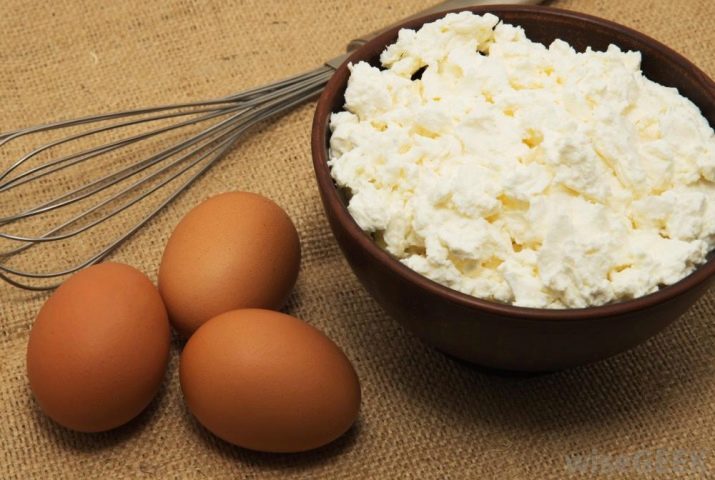
From the age of 8 months, the orange moves to an adult feeding regimen - twice a day. It is important to ensure that the dog has free access to drinking water.
Vitamins
Thinking about buying a vitamin complex for Spitz, you must first obtain the recommendations of a veterinarian. A specialist competent in this matter will personally assess the condition of the pet, the quality of its coat and teeth, and will hear details about the diet from the owner. Based on the information received, the veterinarian will conclude what kind of nutrients the dog needs. When feeding Spitz with food from the premium segment, vitamins can be dispensed with altogether. Such feeds already contain all the necessary complex of nutrients.

But there are times when even when consuming the most selected foods, the dog needs to be given vitamins for additional support. This is a period of molting and pregnancy, after a previous illness or surgery, tooth change.
How to care for a spitz?
In order for a beloved pet to live a long and healthy life in comfort, he needs to ensure the correct maintenance. First of all, you need to keep his coat, teeth in order and observe the daily routine. The key points in caring for a fluffy fur coat is its thorough combing. Wool must not be allowed to gather in lumps. Also, the pet needs vaccination at the age of 4 months and annual vaccination.
In outdoor walks, the Spitz must participate in any season of the year, but the dog must be taught to the tray as well.

Proper care is also a certain mode of the day. Feed and walk the oranges at the same time. Thus, the animal will be disciplined, and the owner will be able to streamline his regime based on what the pet needs.
Before you take a Pomeranian spitz puppy to your home, you need to prepare for it a personal “home”, convenient dishes for food and water, a tray, special hygiene products, brushes for combing wool, including a quality pider. It is advisable to purchase special scissors with rounded ends for the dog, a muzzle and ear drops. All these accessories should be purchased with a focus on a small puppy of small breed.
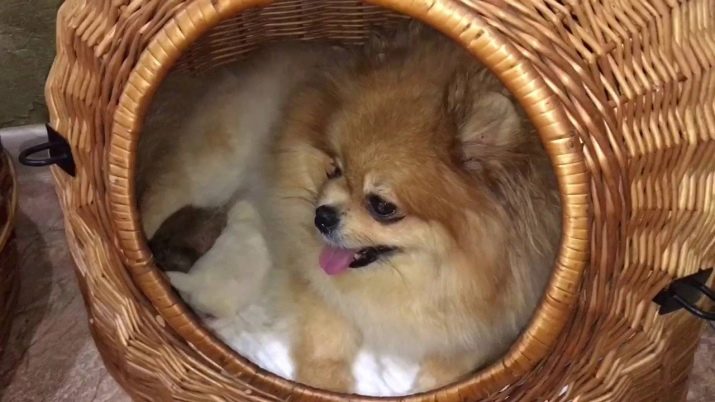
Care for such a pet must be carefully and carefully. Only then will the master's efforts be appreciated by the four-legged friend. In response, he will tirelessly give him his good mood and demonstrate a vigorous state of health.
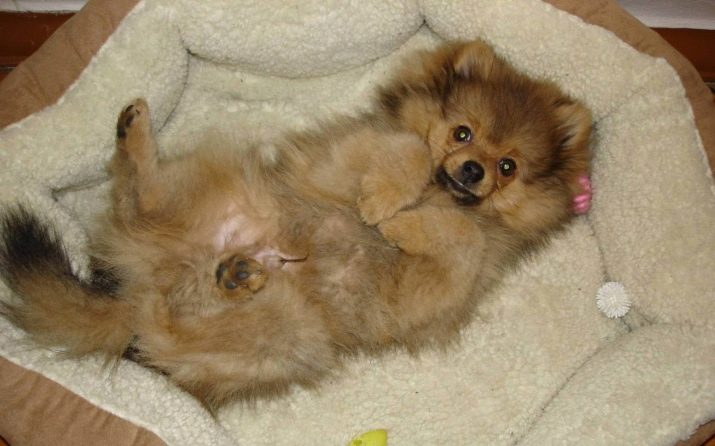
Eyes
It is important to handle them correctly. This should be done with a sponge or cotton swab dipped in cooled boiled water. The procedure is performed as it gets dirty. Instead of water, it is allowed to use a decoction of chamomile or marigolds (calendula), heated to a warm state. Immediately after the procedure, you should not take the dog for a walk because of the risk of weathering your eyes.

Teeth
Care for them at home is a must, as they are the most vulnerable spot in small dogs. To care for your teeth, Spitz need to get a special toothpaste and brush. So that the dog does not accumulate plaque on his teeth, he needs to be removed once a week.
You can use folk remedies for this. Perfectly cleanses the mouth solution of 1 tsp. soda with the same amount of salt per glass of water. If there is no brush, a piece of gauze will do.
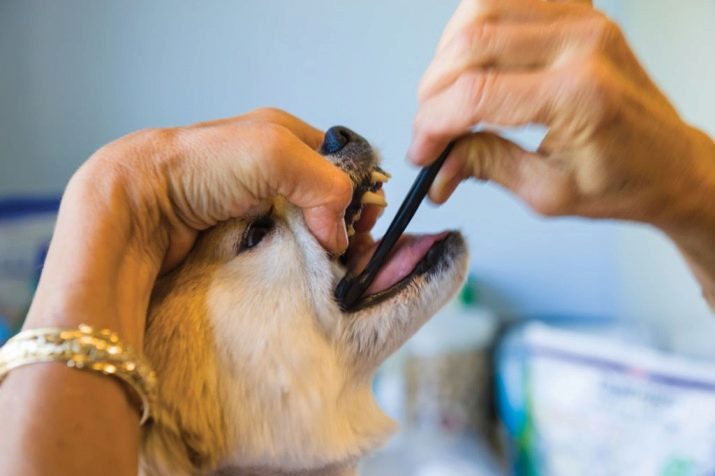
During the period when the spitz’s teeth begin to change, it is necessary to contact the veterinary office.
Claws
Their spitz must be trimmed regularly. They themselves do not grind, which is characteristic of some other breeds. It is more reasonable to entrust a haircut to a specialist, so as not to damage the vessels inside the claw due to inexperience.
But if you want to carry out the procedure yourself, you need to use special high-quality nail clippers. It is useful to prepare a styptic. Clippers need to be trimmed with clippers 1-2 mm. At the same time, you need to talk with the dog gently and firmly fix the paw in your hand.
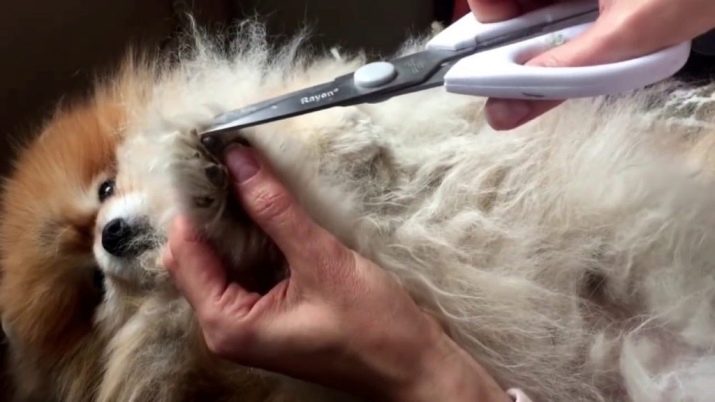
The ears
They also need regular care. Healthy ears look pink and clean. Maintaining them in this state is not difficult. You need to carefully clean them twice a week with cotton buds. In case of redness or swelling of the ears, the dog must be shown to the veterinarian urgently.
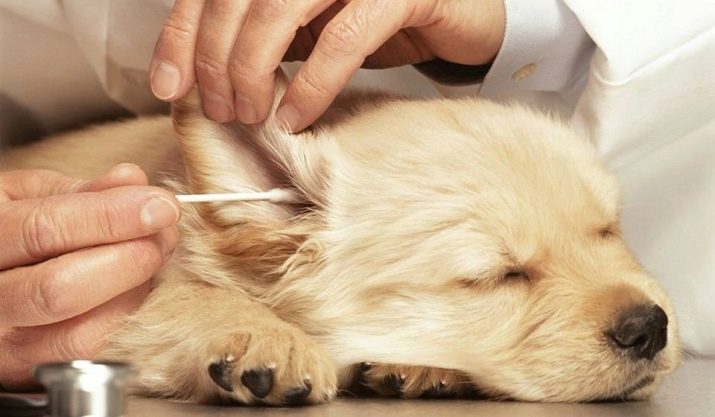
Wool
The main advantage and attractive external quality of the Pomeranian is a thick and shiny coat. Taking care of it is quite simple, having the necessary funds in the arsenal. Care for a luxurious fur coat of orange consists in combing it twice a week with a special brush that combes out excess fluff. Then the wool is combed with a regular comb. You cannot do the procedure daily, as there is a risk of combing out the entire undercoat from the pet.
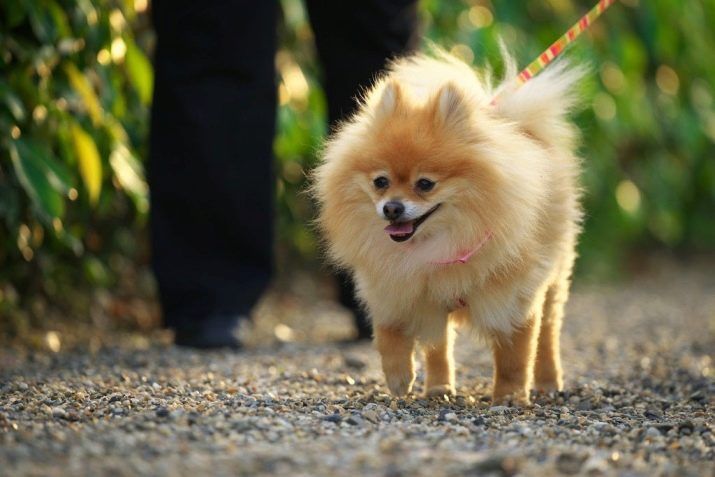
Regarding the orange haircut, by standard, it should not be global. The "fur coat" is only slightly trimmed, gently cutting off excess hair near the anus. During molting, fluffy hair is combed twice a day to prevent the formation of tangles. This is done very delicately and carefully with a soft brush.
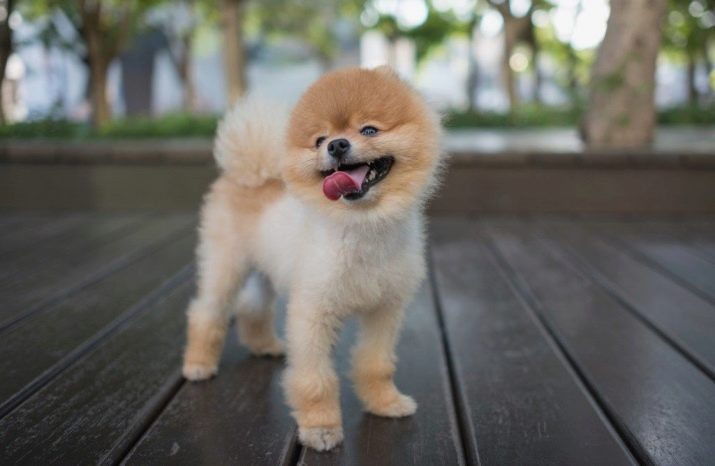
Spitz is washed with shampoo intended for long-haired dogs. Do this no more than once a month. An exception is the upcoming exhibition. Be sure to bathe the dog before going to the "show". Before bathing, the dog needs to be combed thoroughly.
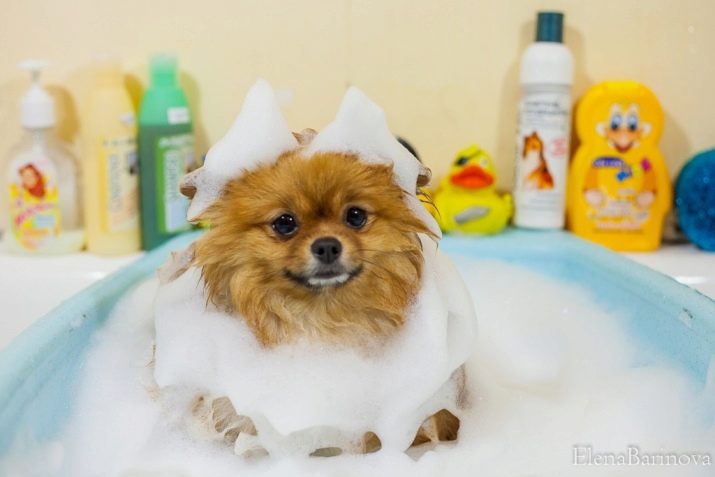
It is often necessary to comb the pet and carry out treatment from ticks and fleas. During molting, water procedures are taboo. Bathing during this period will spoil the hair of the Spitz, it will begin to curl and lose its exterior and well-groomed appearance.
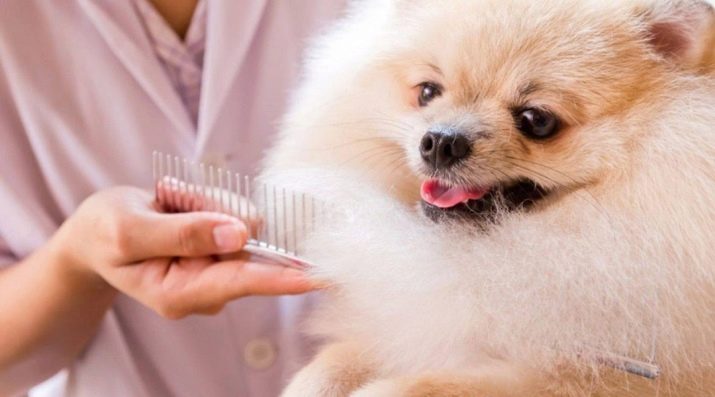
It would be nice to dry a bathed spitz with a hairdryer, but, of course, not with hot air, but with warm.
If the dog dries on its own, fungus and even mold may form in the undercoat.
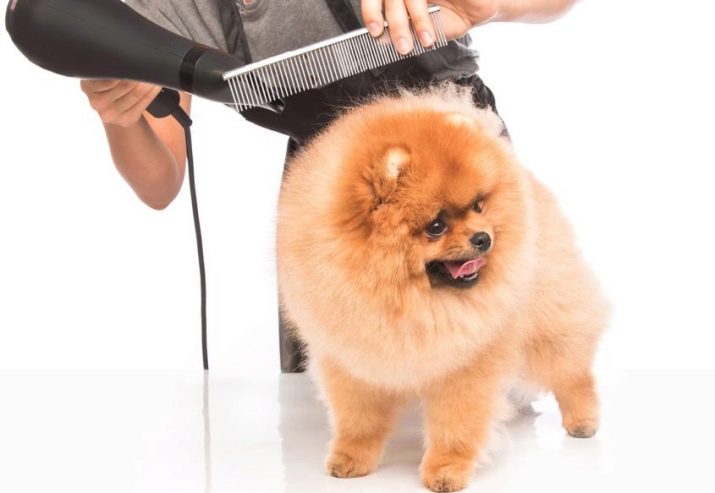
Toilet training
A small pet may be sloppy at first. After all, the dog is used to being watched by his mother. If the fluffy puppy gets dirty, relieving the need, it must be washed with warm water and wiped with a paper towel or soft cloth.
Slowly and persistently teach your pet to go to the tray so that he does not subsequently make unpleasant surprises. For example, when it will not be possible to take him on a planned walk.
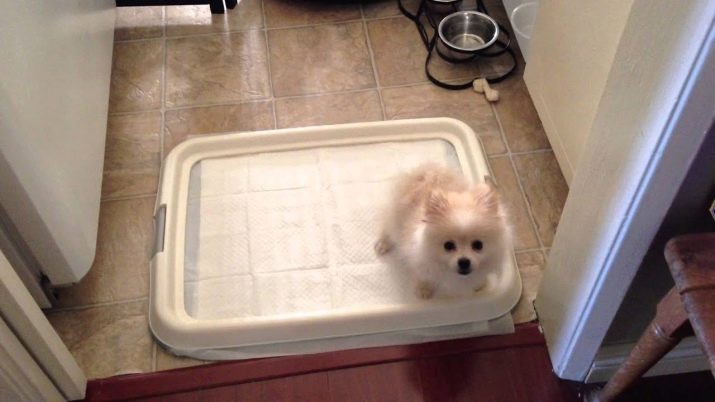
Necessary toys
If a fluffy family member has a choice among a variety of dog toys, most likely, he will not be naughty with furniture and household items. Therefore, this item is important to consider and purchase all kinds of children's tweeters made of dense rubber. Plush animals with plastic and metal elements for the dog will not work. When playing with such items, the dog can damage the teeth. It is better to purchase toys in a special department of the pet store.

Walks
Walking with a puppy is allowed only after vaccination. The dog needs not only care, but also vaccinations. Until that moment, you should not take him to a visit, and on the street he should be strictly in the hands of the owner.
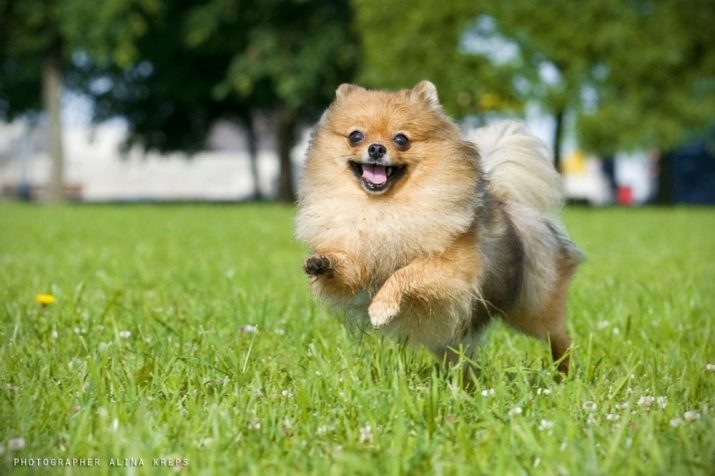
After all vaccines have been received, Pomeranian can be taught to take short walks. For the first walk, 20-25 minutes of the “promenade” 2 times a day will be enough so that he does not get too tired. Gradually, the duration of the walk is increased.
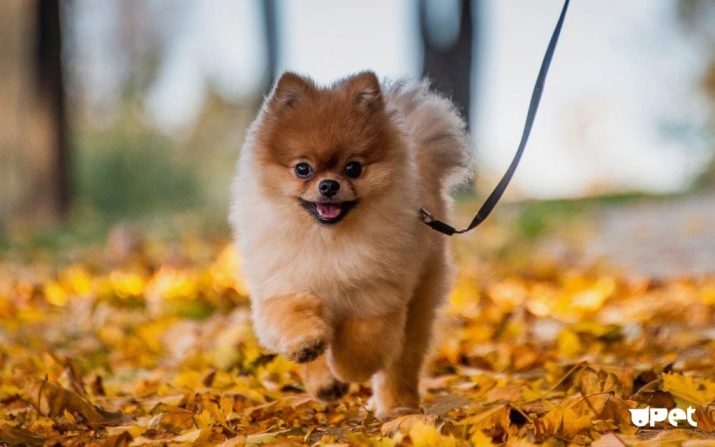
Under the scorching sun, oranges should not be allowed because of the risk of getting heat stroke. In rainy and windy weather, you need to walk, but you need to wear a special dog overalls on the baby. So it will be possible to protect the pet from the common cold.
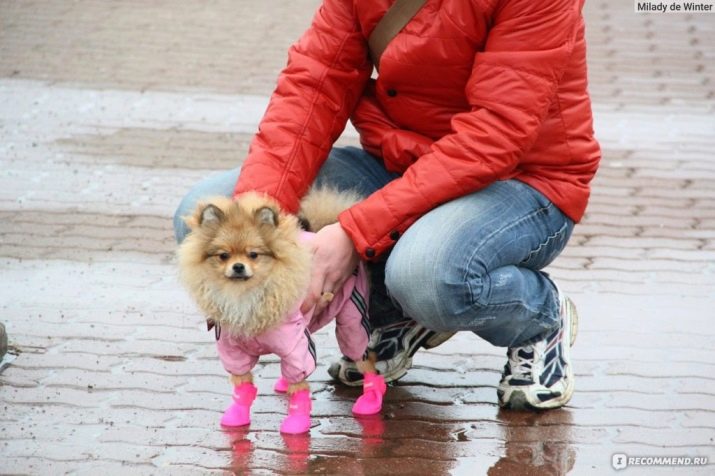
It is undesirable to skip the Spitz in uninhabited places, as the pet needs to socialize. It is better to choose parks and squares for walking. From a young age, the Spitz needs to get used to seeing other people and “talking” with dogs. Otherwise, he can grow up a cowardly homebody.
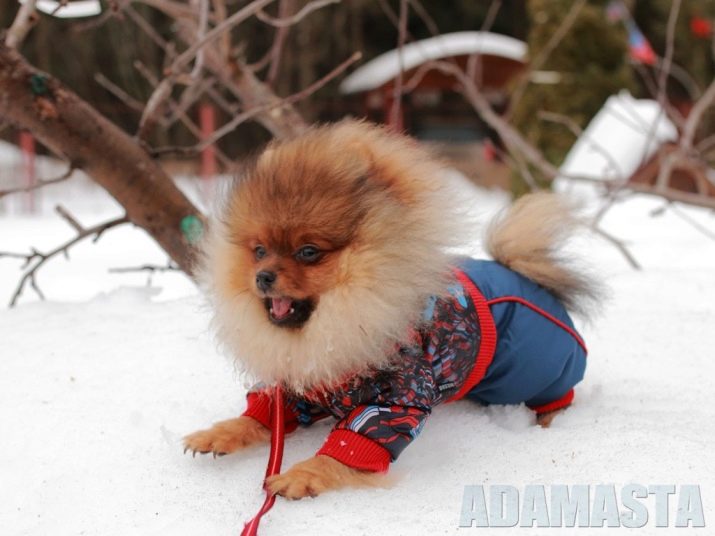
Before "going out" with a Spitz, it is important to learn basic commands. The main team is “to me”. The main thing is that the dog implicitly went to the call of the owner. Keep the crumb exclusively on a leash, which is necessary for its safety.It’s better to train your pet in the collar gradually, putting it on at first only at home for a short time. Only after he ceases to notice the collar on himself, you can fasten the leash to him.
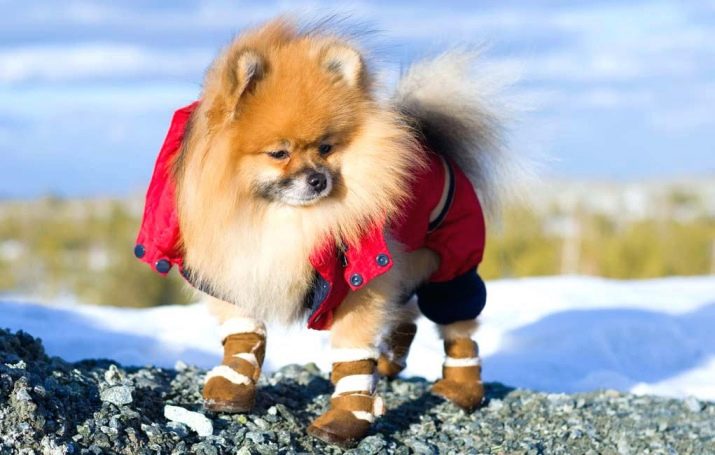
Vaccination
Pomeranian Spitz can be vaccinated with an exceptionally healthy condition. Two weeks before vaccination, antiparasitic prophylaxis is required. Anthelmintic drugs can be given once a quarter, but not more often.
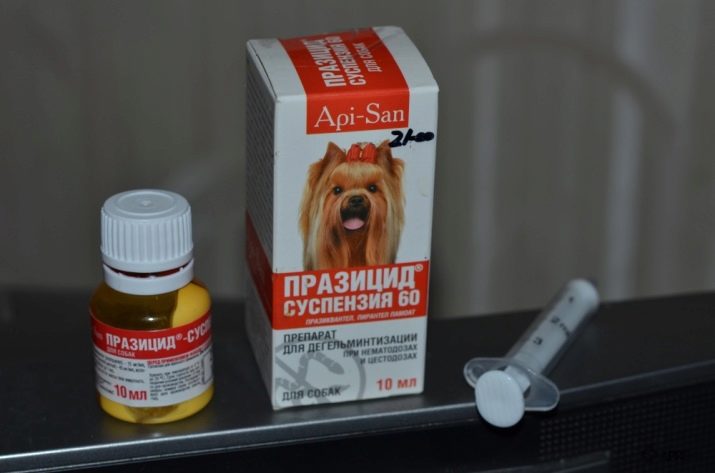
After vaccination at 12 weeks, you can walk the puppy on the street only after 21 days. In the future, vaccination of the dog will be carried out at the age of one year, after a tooth change, and then annually. Veterinarians recommend multivalent vaccinations. Such vaccines contain protection against plague, hepatitis, rabies and other diseases.
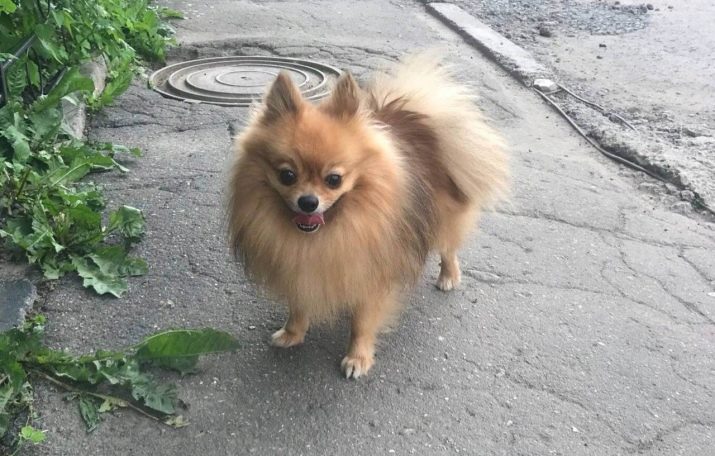
About the features of the content of the Spitz, see the video below.
